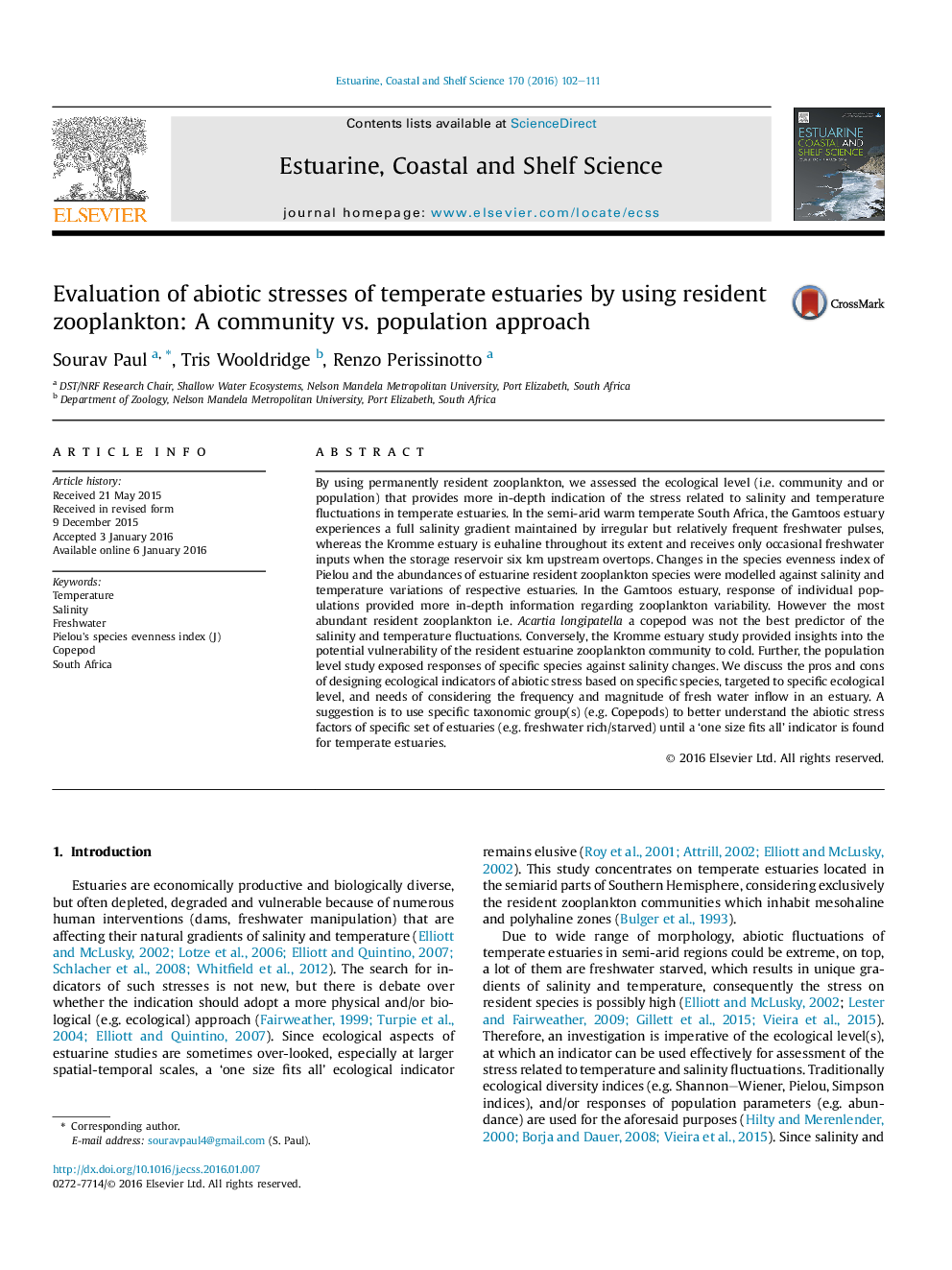| Article ID | Journal | Published Year | Pages | File Type |
|---|---|---|---|---|
| 4539253 | Estuarine, Coastal and Shelf Science | 2016 | 10 Pages |
By using permanently resident zooplankton, we assessed the ecological level (i.e. community and or population) that provides more in-depth indication of the stress related to salinity and temperature fluctuations in temperate estuaries. In the semi-arid warm temperate South Africa, the Gamtoos estuary experiences a full salinity gradient maintained by irregular but relatively frequent freshwater pulses, whereas the Kromme estuary is euhaline throughout its extent and receives only occasional freshwater inputs when the storage reservoir six km upstream overtops. Changes in the species evenness index of Pielou and the abundances of estuarine resident zooplankton species were modelled against salinity and temperature variations of respective estuaries. In the Gamtoos estuary, response of individual populations provided more in-depth information regarding zooplankton variability. However the most abundant resident zooplankton i.e. Acartia longipatella a copepod was not the best predictor of the salinity and temperature fluctuations. Conversely, the Kromme estuary study provided insights into the potential vulnerability of the resident estuarine zooplankton community to cold. Further, the population level study exposed responses of specific species against salinity changes. We discuss the pros and cons of designing ecological indicators of abiotic stress based on specific species, targeted to specific ecological level, and needs of considering the frequency and magnitude of fresh water inflow in an estuary. A suggestion is to use specific taxonomic group(s) (e.g. Copepods) to better understand the abiotic stress factors of specific set of estuaries (e.g. freshwater rich/starved) until a ‘one size fits all’ indicator is found for temperate estuaries.
